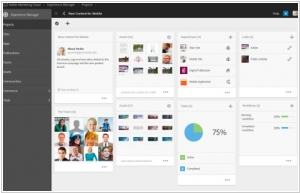Adobe Experience Manager vs Drupal
May 27, 2023 | Author: Michael Stromann
20
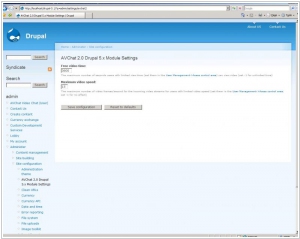
Drupal is a free and open-source content management system (CMS) and content management framework (CMF) written in PHP and distributed under the GNU General Public License. Unlike alternatives it's often used for knowledge management and business collaboration. Because of this plug-in extensibility and modular design, Drupal is sometimes described as a content management framework.
Adobe Experience Manager (AEM) and Drupal are both popular content management systems (CMS) that offer robust features for building and managing websites and digital experiences. However, there are some key differences between the two:
1. Enterprise Focus: Adobe Experience Manager is designed specifically for enterprise-level organizations and provides extensive capabilities for managing large-scale, complex websites and digital experiences. It offers advanced features such as personalized content delivery, multi-site management, digital asset management, and marketing automation integration. Drupal, on the other hand, is a flexible and scalable CMS suitable for a wide range of organizations, from small businesses to large enterprises.
2. User Interface and Customization: Adobe Experience Manager provides a user-friendly, drag-and-drop interface that allows non-technical users to easily create and edit content. It offers comprehensive tools for designing and customizing websites, allowing for visually stunning and highly tailored experiences. Drupal, while it also offers a user-friendly interface, requires more technical expertise for customization. It provides a flexible framework that allows developers to create highly customized websites and applications.
3. Integration and Extensibility: Adobe Experience Manager integrates seamlessly with other Adobe Marketing Cloud products, such as Adobe Analytics, Adobe Target, and Adobe Campaign. This enables organizations to create unified, data-driven experiences across multiple channels. Drupal, on the other hand, offers a vast library of modules and integrations that allow for seamless integration with third-party systems and services. It provides a flexible and extensible platform that can be customized to meet specific integration needs.
4. Support and Community: Adobe Experience Manager is backed by Adobe's extensive support network and offers enterprise-level support options. It has a dedicated community of developers and provides comprehensive documentation and resources. Drupal, as an open-source CMS, has a large and active community of developers and contributors. It offers community-driven support, documentation, and a wealth of contributed modules and themes.
See also: Top 10 Enterprise Portals
1. Enterprise Focus: Adobe Experience Manager is designed specifically for enterprise-level organizations and provides extensive capabilities for managing large-scale, complex websites and digital experiences. It offers advanced features such as personalized content delivery, multi-site management, digital asset management, and marketing automation integration. Drupal, on the other hand, is a flexible and scalable CMS suitable for a wide range of organizations, from small businesses to large enterprises.
2. User Interface and Customization: Adobe Experience Manager provides a user-friendly, drag-and-drop interface that allows non-technical users to easily create and edit content. It offers comprehensive tools for designing and customizing websites, allowing for visually stunning and highly tailored experiences. Drupal, while it also offers a user-friendly interface, requires more technical expertise for customization. It provides a flexible framework that allows developers to create highly customized websites and applications.
3. Integration and Extensibility: Adobe Experience Manager integrates seamlessly with other Adobe Marketing Cloud products, such as Adobe Analytics, Adobe Target, and Adobe Campaign. This enables organizations to create unified, data-driven experiences across multiple channels. Drupal, on the other hand, offers a vast library of modules and integrations that allow for seamless integration with third-party systems and services. It provides a flexible and extensible platform that can be customized to meet specific integration needs.
4. Support and Community: Adobe Experience Manager is backed by Adobe's extensive support network and offers enterprise-level support options. It has a dedicated community of developers and provides comprehensive documentation and resources. Drupal, as an open-source CMS, has a large and active community of developers and contributors. It offers community-driven support, documentation, and a wealth of contributed modules and themes.
See also: Top 10 Enterprise Portals
Adobe Experience Manager vs Drupal in our news:
2020. Acquia launches Digital Experience Platform
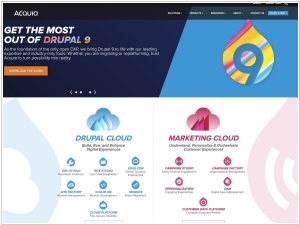
Digital experience company Acquia has announced the launch of its new Acquia Open Digital Experience Platform (DXP). This powerful platform combines Acquia Marketing Cloud and Acquia Drupal Cloud, providing organizations with a unified solution to leverage data and content effectively, enabling the rapid creation of innovative digital experiences. With the Acquia Open DXP, marketers and developers now have access to a single, user-friendly platform for building, personalizing, and orchestrating multi-experience customer journeys across various customer touchpoints, including touchscreens, chat, voice, and more. The platform also offers valuable tools such as Developer Studio, an integrated development environment (IDE), and Site Factory, a robust solution for managing and scaling Drupal 9 sites and applications, making it easier for developers to build Drupal sites. Additionally, the inclusion of CMS Migrate simplifies the transition from older versions of Drupal and legacy CMS to the latest Drupal 9 release.
2020. Adobe Experience Manager now offered as cloud-native SaaS application
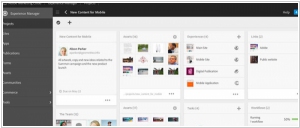
Adobe Experience Manager has introduced a cloud-native Software as a Service (SaaS) application. Previously, it was available as an on-premises solution or a managed service, but it lacked the pure cloud-native architecture. The availability of AEM as a cloud service brings significant benefits to customers, providing the same value as any other cloud service. With this new offering, customers can now utilize all the features and tools of AEM without the burden of maintenance, management, or updates. This enhances flexibility, agility, and continuous access to the latest updates for the marketing team. AEM offers a range of capabilities, including real-time customer experience management. Real-time access to data enables the delivery of products, services, and experiences tailored to the specific needs of each customer at any given moment.
2015. Drupal 8 is released
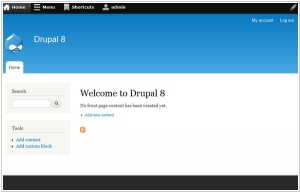
Drupal has finally released the highly anticipated Drupal 8.0 platform, which introduces a range of exciting features and improvements. These include in-context editing and previews, allowing users to see a real-time representation of their content as they edit it. The platform also provides comprehensive content modeling capabilities, incorporating entities, fields, and views right from the start. Users can easily customize content pages, forms, and administrative pages using the intuitive administrative interface. Additionally, Drupal 8.0 offers built-in support for multilingual content and localization, ensuring that websites can be easily translated and adapted to different languages and regions. The platform includes configuration management, enabling seamless deployment of changes between different environments. It adopts a mobile-first approach, ensuring that websites are responsive and optimized for mobile devices, while also delivering HTML5 output. Drupal 8.0 supports native web services, allowing easy integration with other applications and systems through REST. The platform prioritizes accessibility and compliance with WAI-ARIA standards, ensuring an enhanced experience for users with disabilities. It follows modern PHP standards and practices, incorporating popular libraries like Composer, Symfony2, Guzzle, and Twig. Drupal 8.0 focuses on front-end performance, offering improved caching and seamless integration with CDNs and reverse proxies. Furthermore, the platform is fully compatible with PHP7 and supports both PostgreSQL and SQLite databases. Overall, Drupal 8.0 represents a significant advancement in functionality, performance, and flexibility for web developers and content creators.
2009. Adobe LiveCycle ES goes to the Cloud
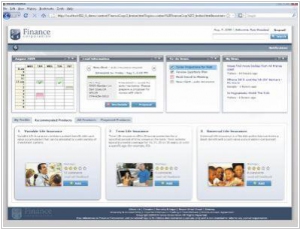
Adobe has announced the new "cloud" version of its ECM system Adobe LiveCycle ES. It can be hosted on Amazon Web Services platform. Adobe also offers own hosting service for LiveCycle ES including 24/7 maintenance and support. The new version LiveCycle ES 2 features two new modules: LiveCycle Mosaic and LiveCycle Workspace ES 2 Mobile. The first is for the building internal portals - rich personalized interfaces that provide access to the data stored in LiveCycle ES in the form of widget "mosaic". The second - provides mobile access to the system on iPhone, BlackBerry and Windows Mobile. Besides, users can access the system via browser using Flash, AIR desktop client or directly from a PDF document (opened in Adobe Reader). ***
2009. Adobe's LiveCycle Powered by Amazon
There is a perception among many readers that Amazon Web Services (AWS) is not fully equipped for enterprise-level use, and Amazon needs to partner with more companies that focus on enterprise application development. On the other hand, Adobe aims to persuade developers who are fond of AWS to consider building business applications using its LiveCycle platform. In line with this objective, Adobe has announced that LiveCycle will be powered by AWS, specifically by deploying a Red Hat JBoss J2EE stack on AWS and running LiveCycle on top of it. This integration simplifies the prototyping, development, and testing process, potentially attracting more developers to the Adobe LiveCycle platform. While AWS may not be the ideal deployment platform for the write-intensive and transactional applications typically developed on LiveCycle, Adobe clarifies that the current focus is on utilizing AWS as a development and testing platform. This gradual approach aligns with typical enterprise practices. LiveCycle, which has been available for five years, offers features such as Business Process Management (BPM), leveraging Adobe AIR and Flex to provide rich internet and mobile capabilities. Adobe demonstrates the potential of LiveCycle through a demo showcasing an insurance claims process for a car accident. The integration of LiveCycle with AWS allows for faster prototyping, development, and testing cycles, enabling developers to quickly engage with the platform and generate revenue. The combination of Adobe's expertise in document management and the importance of dynamic BPM, which necessitates adaptable processes in response to real-world situations, positions LiveCycle on AWS as a compelling proposition. The article concludes by inviting readers to share their thoughts on LiveCycle and whether they would consider using it now that it is available on AWS.
2008. Adobe wants to manage enterprise content
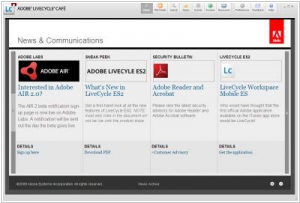
Long ago Adobe invented PDF - the format designed for document collaboration. Then for this format Adobe created a set of auxiliary tools. One of these tools, Adobe LiveCycle, was designed for building web forms that save entered information directly to PDF-files. And now, on the basis of this product and in partnership with Alfresco, Adobe has released its own ECM solution Adobe LiveCycle ES that will compete with MS Sharepoint, Open Text and Oracle Content Management. Alfresco - is a very ambitious company that is going to revolutionize the ECM market ruled by Microsoft, IBM, EMC, Open Text, SAP and Oracle. Alfresco is well-known for its open-source strategy. And now they are partnering with the "big brother" Adobe. Adobe LiveCycle ES is intended to automate all paper work - from form input to document approval and executions. And everything is accessible via a web browser. The system functionality includes: ***
2008. Adobe LiveCycle Update 1 Announced
In the era of Web 2.0, user-friendly applications have become the norm, with platforms like Facebook and Digg requiring little to no training. However, when dealing with real-world businesses online, the experience often reverts to cumbersome forms and unintuitive processes that make users want to abandon the task and resort to phone calls instead. This is frustrating for both users and companies who would prefer automated forms. Adobe's LiveCycle ES offers a solution for developers to create user-friendly forms for essential online tasks, such as banking or insurance applications. With the release of LiveCycle ES Update 1, Adobe expands its suite to include LiveCycle Content Services ES, a content services solution based on the open-source Alfresco ECM. This component provides content storage, collaboration, search, and other features, and competes with products like Oracle Content Management and Microsoft SharePoint. Additionally, LiveCycle PDF Generator 3D ES allows integration of 2D/3D design data into PDFs, while Solution Accelerators provide code and templates to help companies utilize LiveCycle effectively. LiveCycle aims to simplify the user experience and benefit both consumers and businesses. The update will be available on July 17th, followed by the Solution Accelerators.

